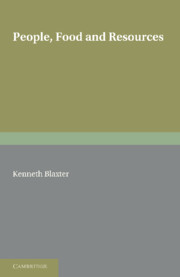Summary
A CLASSIFICATION
Many have expressed views about the problems of population and the supply of food. Their views can be roughly classified – indeed they tend to form a sequence. First are those who predict what they think will happen. Second are those who, realising the magnitude of the problems, state what might be done, without necessarily suggesting pathways to such an accomplishment. Last are those who propose specific courses of action or approaches so as to realise objectives. Obviously the latter class includes some who are concerned with generality and may well think that a particular course constitutes a panacea, as well as others who provide a more detailed guide.
That these classes reflect a sequence is perhaps illustrated by previous chapters. First there has been an analysis to suggest what might occur and this was followed by an estimate of what needed to be done – to increase food production by 75% by the year 2000. The latter is an immediate objective; little has been said about objectives in the longer term. Additionally, there has been scant mention of possible courses of action, either to meet immediate objectives or longer-term ones. It is perhaps useful to summarise what has been concluded, almost en passant, about the discernible future and the constraints which will beset the world's peoples, before considering possible ways in which solutions might be found.
- Type
- Chapter
- Information
- People, Food and Resources , pp. 98 - 109Publisher: Cambridge University PressPrint publication year: 1986



